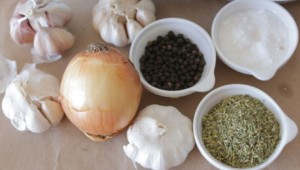Properly seasoned food is the key to good taste. When your guest comments on how great the food tastes you can be certain that the food was seasoned to perfection. But how do you season to excellent taste? The simple answer is that practice makes perfect, but having a starting point to guide you will send you down the right path.
Chef Mark Chayette, in response to an article in Restaurant Hospitality about properly seasoned food, says, “You can’t intellectualize about salt and pepper.” Chayette understood the importance of the basics—you can use all the exotic ingredients you want to flavor your dishes but none of those elements will matter if your food is fundamentally off. Chef Thom Bennet likens seasoning “to making music. There has to be a harmony to the flavors that ultimately produces a flavor that is complex without having one taste or seasoning dominate and overpower the dish. That is the magic part.” If you want to read more about what these chefs and others say about seasoning, you can read the article here.
Making harmony is part of a process but will make the flavors of your food more vibrant than they would otherwise be. Food must be cooked with salt in order for this to occur—and food that is salted at the table will just taste salty. Tasting food in the back of the house and adjusting seasonings from there is absolutely imperative. Dissect the flavor profile. If you notice anything missing or if you notice one flavor dominates your dish, season accordingly. Food should be a complex balance of flavors, a marrying of the five known tastes: sweet, salty, sour, bitter, and Umami.
To accomplish this harmony, try practicing the following steps:
- Does the dish need salt? Most of the time the answer is a resounding “YES!” Add about a half teaspoon at a time, stirring in between, to reduce bitterness and heighten the flavors.
- Does the dish need more spices? The amounts of spices given in a recipe are usually a general guideline, and good chefs will adjust according to the needs of their restaurant. Add just a pinch of spice at a time until you accomplish the flavor you want.
- Does the dish need acidity? Acid will help the flavor in an entree shine. Try adding a splash of citrus juice, some vinegar or wine, or even some hot sauce to brighten up the meal.
- Does the dish need more depth? Remember, you want your food to be complex and not just ordinary. If the flavors seem okay to you but seems a little lackluster, try adding umami flavors. Worcestershire or soy sauce can do the trick, or perhaps minced anchovies or tomato paste will help your food achieve the brightness you desire.
- Does the dish need more richness? Cream or butter will work wonders in melding the flavors in food.
Cooking need not be implemented with the same precision as, say, baking. The biggest thing to remember is that it does take some practice to get the seasoning right, and detecting the subtle nuances of the food you are creating will get easier after time. Cooking with this in mind will make the learning process easier, and really, more fun. Because you get to taste all those great sauces and soups as you make them. Bon appetit!



